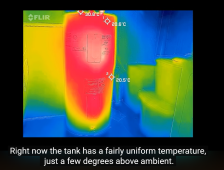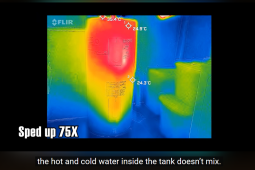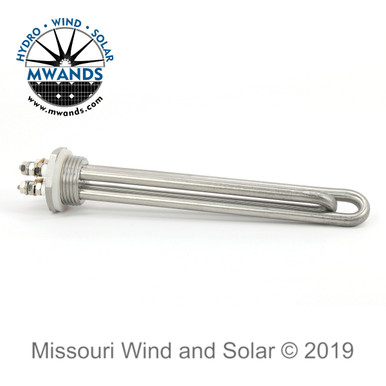Hedges
I See Electromagnetic Fields!
- Joined
- Mar 28, 2020
- Messages
- 20,505
Forgive me but I still don’t get it.. if the water is 150f and it only needs to be 120f then the cold water cools that 150f water to 120f so how isn’t the 30f wasted? The user isn’t delivered 150f that they heated it up to. They are still only getting 120f
The excess energy isn't dumped to ambient by letting it cool. Cold water is blended in, averaging out the two.
Cooled 30f by transferring 30f x volume worth of energy to the cold water blended with it. Which rises say from 60f to 120F, so that would be 60f x volume/2 that gets heated. You end up with 1.5 x volume at 120f.
Electric water heater, 100% of energy (that is dissipated in heating element) goes to the water whether 120f or 150f. The I^2R losses in wiring are same regardless.
Heat pump water heater, less efficient the greater the temperature differential, so if 200% efficient at 120f, something less than 200% but still well above 100% at 150f.
if that’s how the mixing valve works I still see no point.. however if the valve someone lowers the amount of hot water going thru the pipe and replaces that with cold it would all make sens, but I’m thinking the valve operates like I opened the valves..
What you do is open cold as well, fill sink in less time, then shut off both valves.
Mixing valve supports say 10 gpm. Your faucet adjusts from zero to 2 gpm. Total flow of hot + cold is set by faucet. Temperature balancing valve has thermal stack fighting spring, moving a shuttle back/forth to adjust ratio of hot cold.
My shower has that, and if someone flushes toilet, that reduces pressure in cold line to shower (more than it reduces pressure in cold line feeding water heater, due to pipe arrangement.) The temperature balancing valve adjusts to maintain steady output temperature. That one has a knob adjusting target pressure during use. One mounted on water heater would be set once.
All this is very different from maintaining excess pressure in an air tank, and dropping it with a regulator. Done properly, we get all finishing nails set to same depth. I've observed the difference with different compressors and different brad nailers. To achieve efficiency with air compressors, what we would want is to not bleed off excess pressure (generating heat), rather use that pressure to operate a variable displacement pump, so the excess energy is used to produce additional volume. In practice, burn off the energy and get job done. For blending hot water, no such inefficiency to consider recovering.
Last edited:







